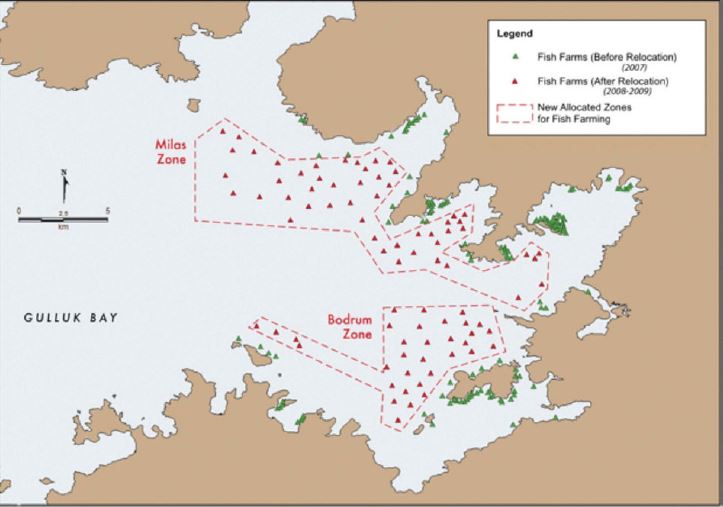1 Background
Inland aquaculture started in Turkey in the 1970s. But aquaculture expanded rapidly with the contribution of marine fish farms in the 1980s. It was dominated by cage farming of sea bass (Dicentrarchus labrax), sea bream (Sparus aurata), and trout (Oncorhyncus mykiss).
In the Turkish marine finfish sector sea bass and sea bream are dominant. Turkish marine aquaculture production has increased from 35,000 tonnes in 2000 to around 109,000 tonnes in 2013 (TUIK, 2013). It has been going through a period of unprecedented growth over the past 13 years (Figure 1).
It is the rapid growth of the aquaculture sector which makes it remarkable.
Development opportunities for aquaculture in the coastal zone of Turkey are limited because of the difficulties in obtaining access to suitable sites. Its expansion in coastal waters has not only added more pressure to marine and coastal ecosystems, but has also created conflicts among existing users of coastal resources.
Consequently, there was a need for expansion space and this growth has led to the drafting and implementation of new planning and management policies by the Turkish government. Coastal planning was realized by the inter-ministry committee in 2007. However there was no broad-based “Integrated Coastal Management Board” with minimal inputs by the mayor, nongovernmental organizations and so on. It was a process that increased
Figure 1. Overall aquaculture production and marine finfish production in Turkey.
the pressure on fish farming in the coastal zone. Priority and legitimacy over the maritime space was supported by the legal framework and given to the aquaculture industry through the establishment of a mariculture zone. This was a basic move to avoid conflicts and to assure the sustainable development of the sector.
The Ministry of the Environment amended existing environmental legislation. It was then obligatory for the farms to be moved from the shallow shoreline waters to the deeper areas, particularly in gulfs and bays. Two mariculture zones were defined in Gulluk Bay, Mugla (Figure 2), which has a surface area of about 670 km2
Figure 2. Shows the position of licensed farming facilities before and after relocation according to the provisions of the Environmental Law (MEF, 2007).

and a coastline of around 262 km. Accordingly in 2007 new parameters and criteria (Table 1 and Table 2), were established in Gulluk Bay comprising two large mariculture zones. There was a Milas Zone and a Bodrum Zone as defined by a Turkish Inter-Ministerial Consortium, together with Mugla Fish Farmers Association. The mariculture zone covers 20.8 percent (139.8 km2), of the Bay. Licensing for the cage areas was only taken up for 0.45 percent (3.03 km2), of this area (Yucel-Gier, et al., 2013). Gulluk Bay contributes about 70 percent of the total Turkish marine aquaculture production of sea bass and sea bream. Major uses of the Bay were defined as aquaculture, trawling, natural areas and marine transport. The movement of farms to these mariculture zones took place in 2009. Before relocation, 127 fish farms had been working close in-shore. These had a reported 52,000 tonnes production capacity in 2007.
As an economic consequence the small-scale fish farm has now disappeared. After relocation a total number of 81 new, larger, fish farms began to operate in Gulluk Bay and planned production capacity was increased to 88,000 tonnes. Forty-eight of these fish farms have a capacity of between 500 and 1,000 tonnes (EIA, 2008).
The production capacity in 2013 was estimated at 60,000 tonnes (www.muglakulturbalikcilari.com). There is still 28,000 tonnes available capacity.
Table 1. Physical parameters and criteria for sensitive areas where cage fish farms can be set up (MEF, 2007).